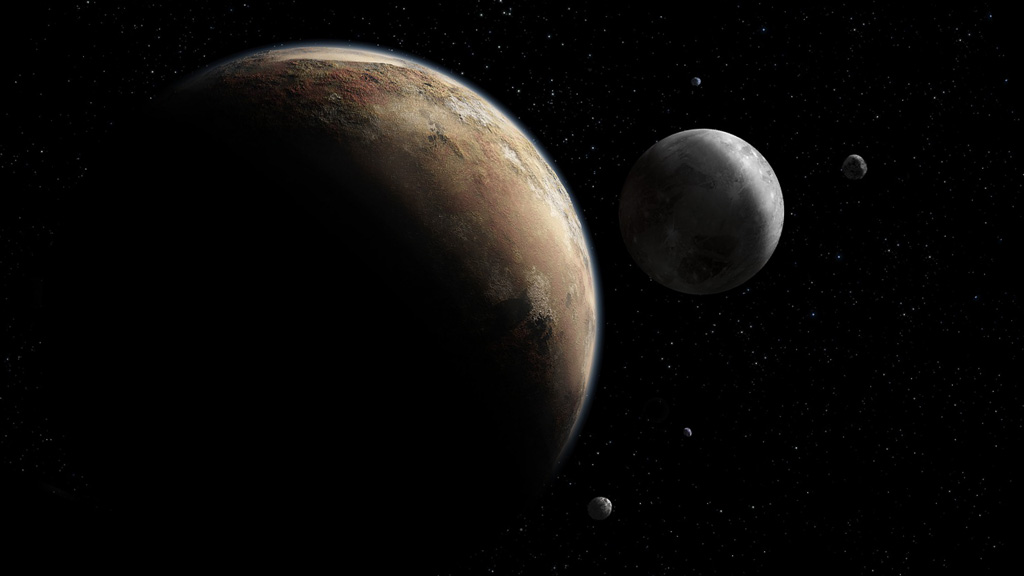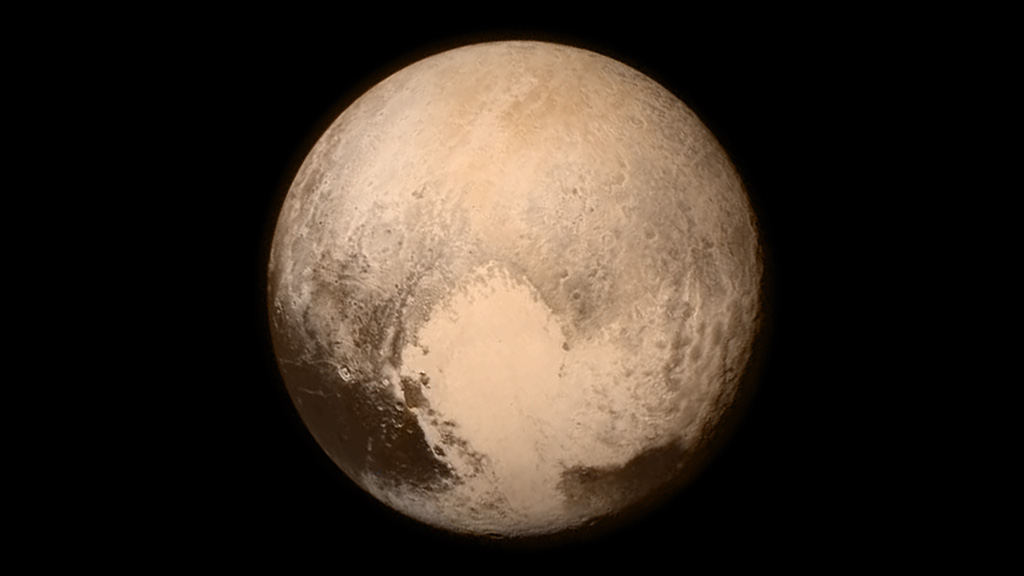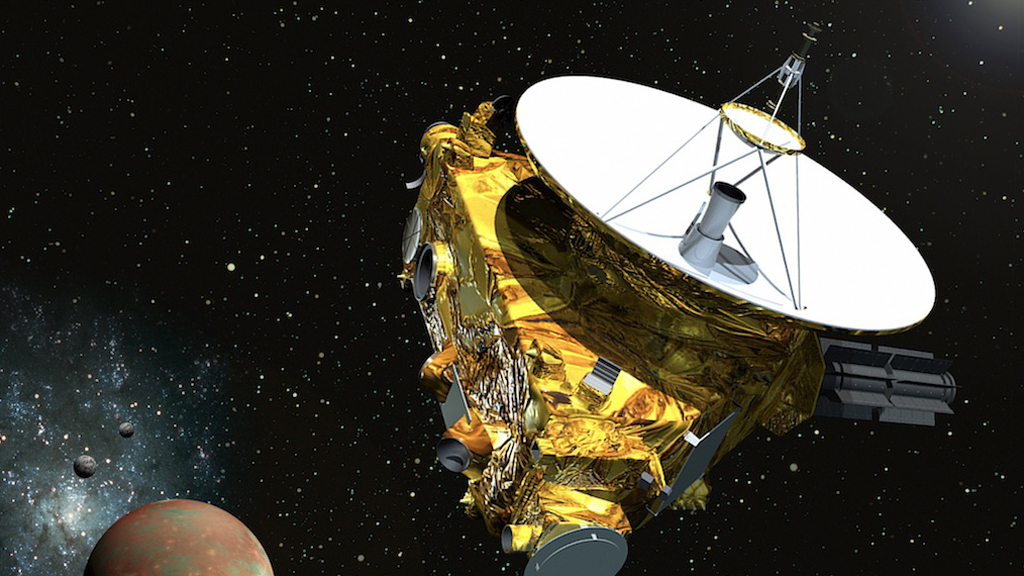Pluto's Underground Ocean

Pluto and Charon may keep their interiors warm enough to support liquid water oceans.
Over three and a half billion miles from the Sun, Pluto is too cold for liquid water to exist on its surface. Its interior however, may tell a different story. NASA research suggests that Pluto—and other small, icy bodies—may in fact be storing oceans of water beneath their surfaces, kept liquid by a process called tidal heating. Tidal heating occurs when orbiting bodies, such as Pluto and its largest moon, Charon, create heat due to the constant pulling of gravity between the bodies. An analysis of the light reflected from icy worlds in the outer solar system, including Pluto, reveals signatures of crystalline water ice and ammonia hydrates. At the extremely low surface temperatures on these objects, water ice takes a disordered, amorphous form instead of the regularly ordered crystals typical in warmer areas, such as snowflakes on Earth. Also, space radiation converts crystalline water ice to the amorphous form and breaks down ammonia hydrates, so they are not expected to survive long on the surfaces of these frozen worlds. This suggests that both compounds may have come from an interior liquid water layer that erupted to the surface, a process known as cryovolcanism. This discovery changes our understanding of where liquid water may form and opens up more options in the search for life within our solar system. Check out the images to learn more.

Most of the long-lived heat inside icy bodies comes from radioactive decay of elements incorporated into these objects as they formed.

The tidal pull of Pluto and its moon Charon on each other creates friction that maintains heat under the surface.

Wright Mons is a possible cryovolcano spotted by the New Horizon's spacecraft during its flyby of Pluto in July 2015.
For More Information
See NASA.gov
Credits
Please give credit for this item to:
NASA's Scientific Visualization Studio
Images courtesy of NASA/Johns Hopkins University Applied Physics Laboratory/Southwest Research Institute
-
Writers
- William Steigerwald (NASA/GSFC)
- Matthew Bernstein (Experiential Learning Program, UMD)
Release date
This page was originally published on Monday, July 16, 2018.
This page was last updated on Wednesday, May 3, 2023 at 1:46 PM EDT.



